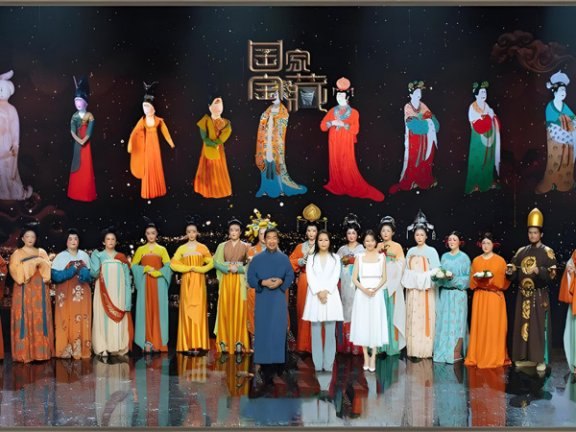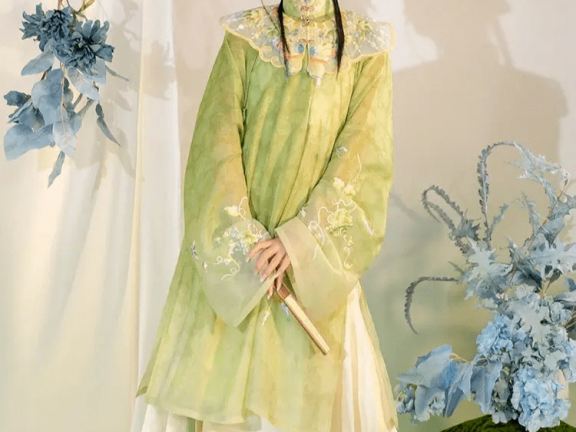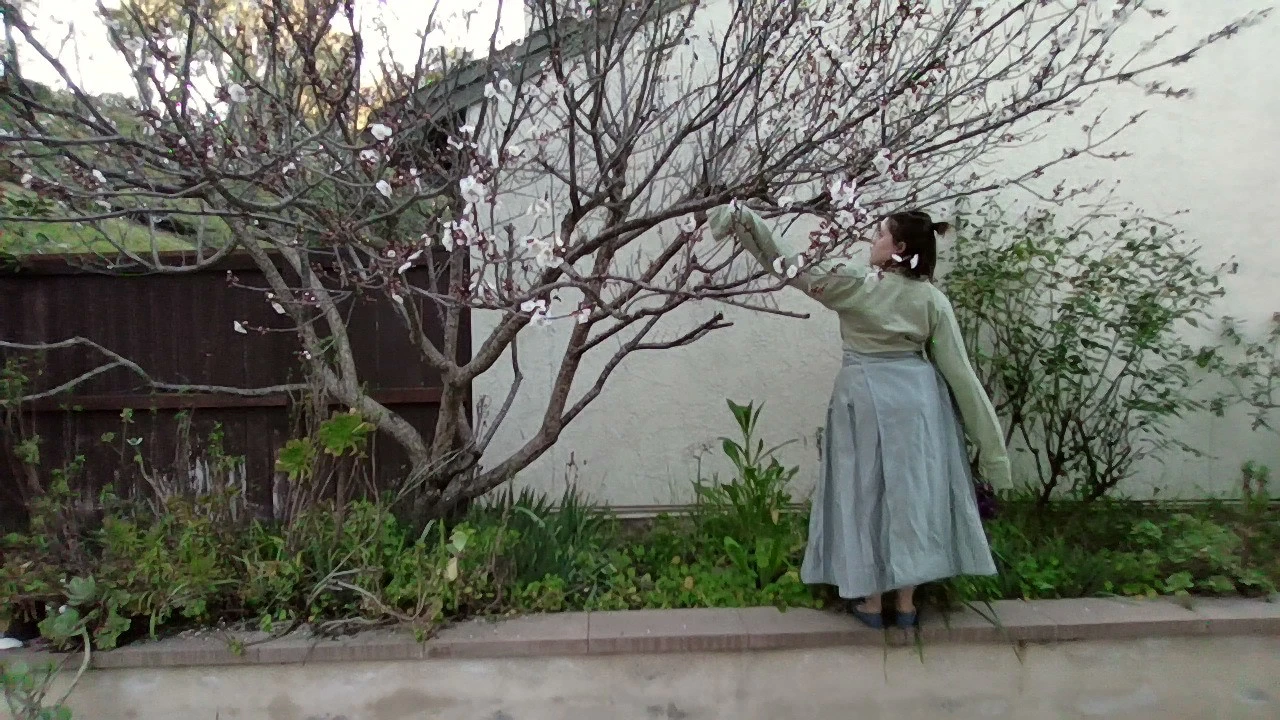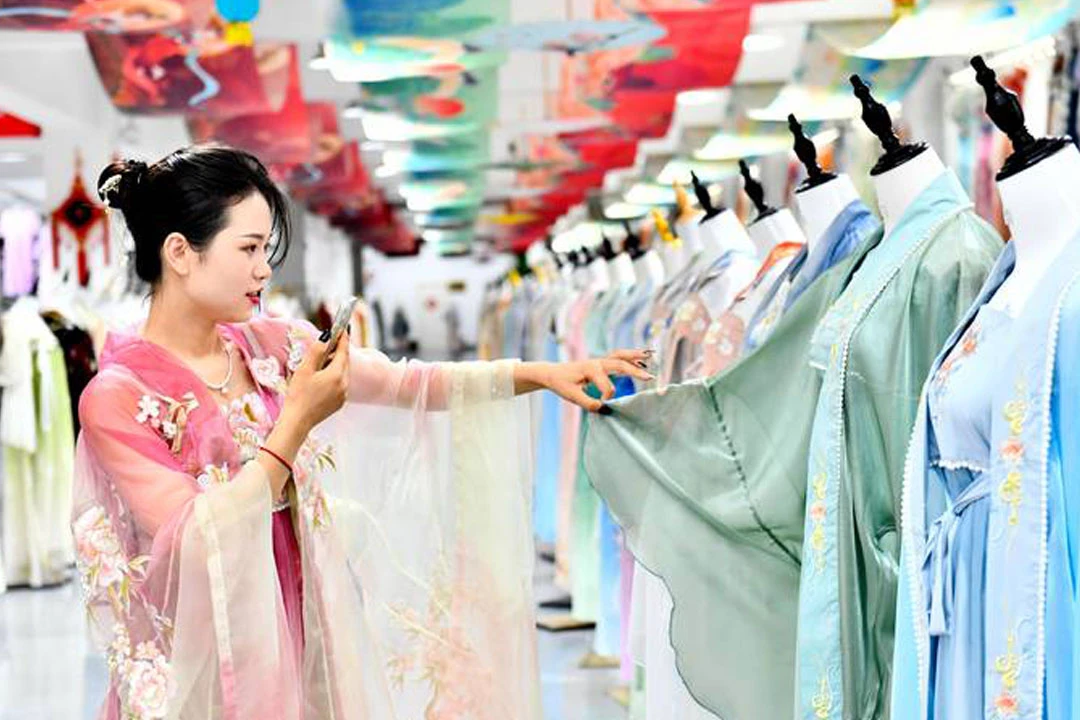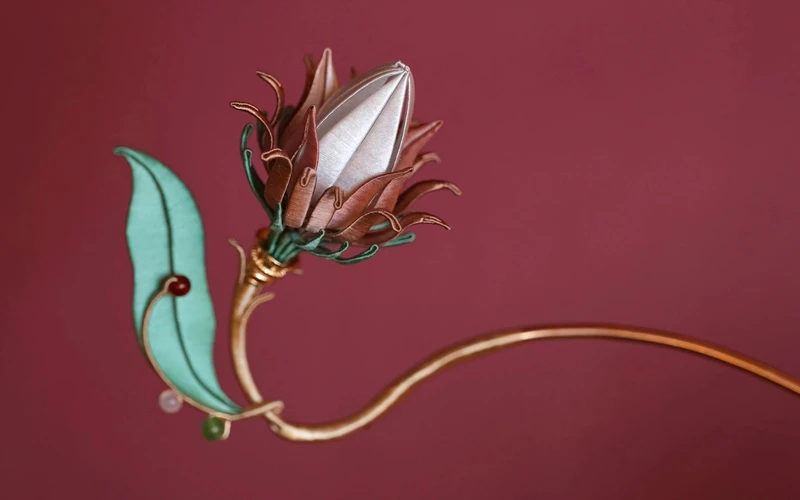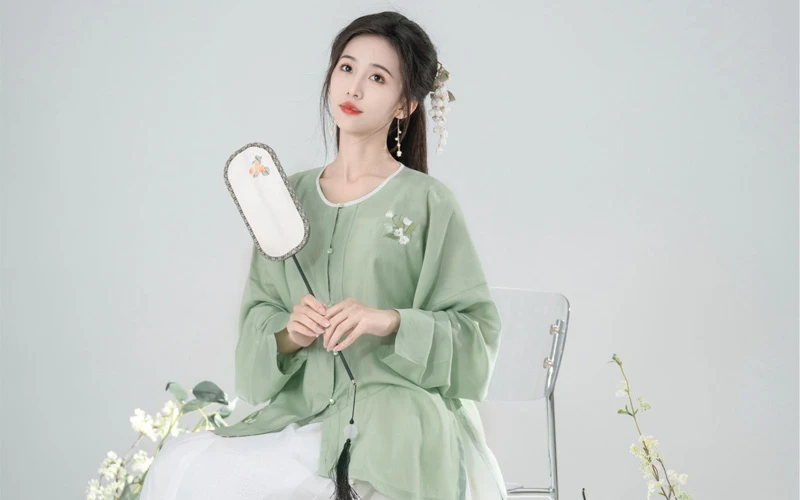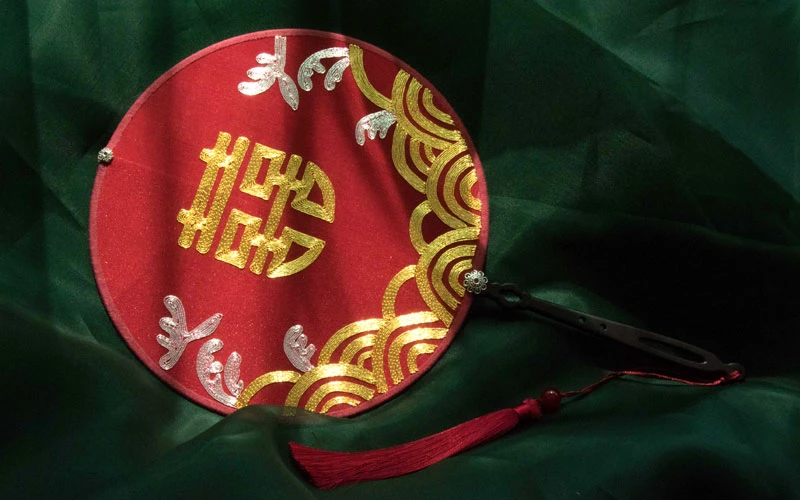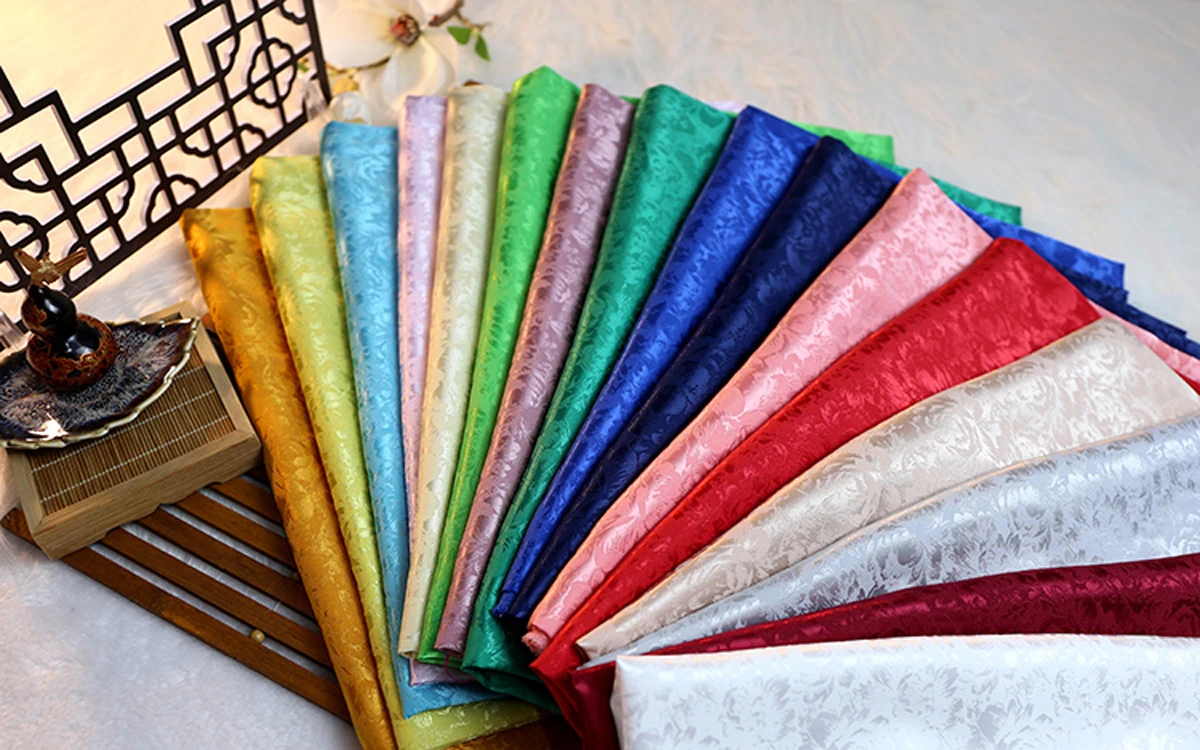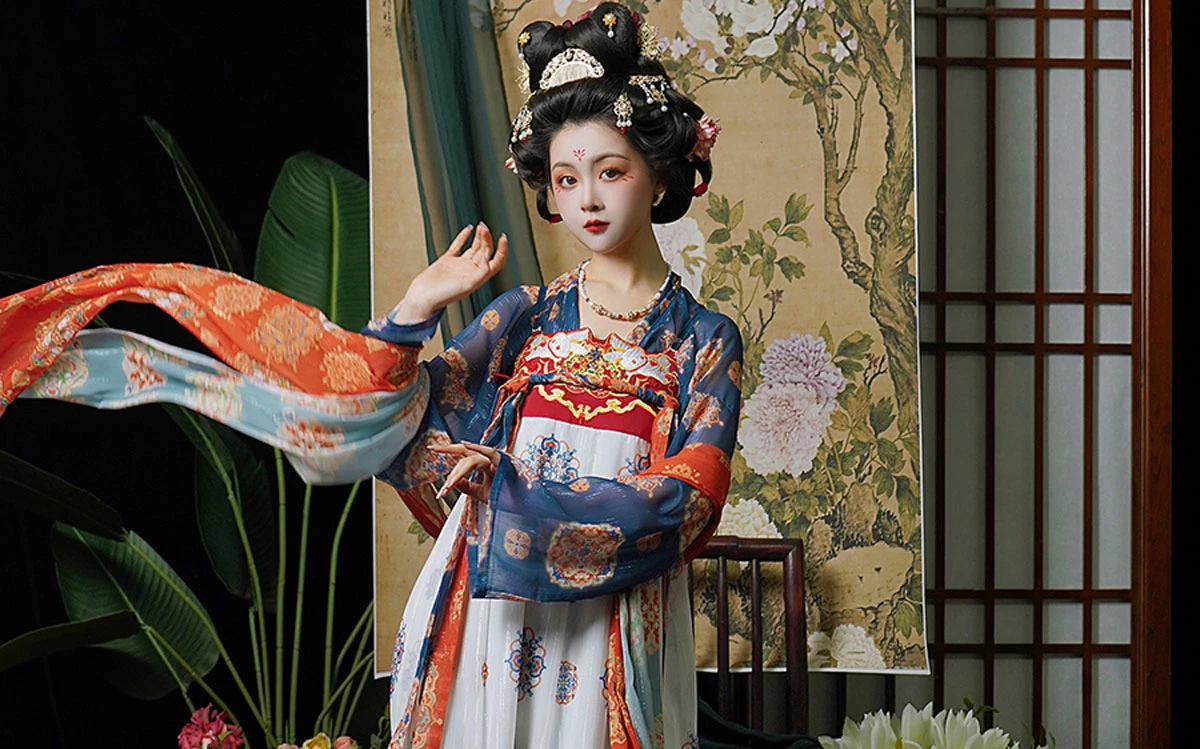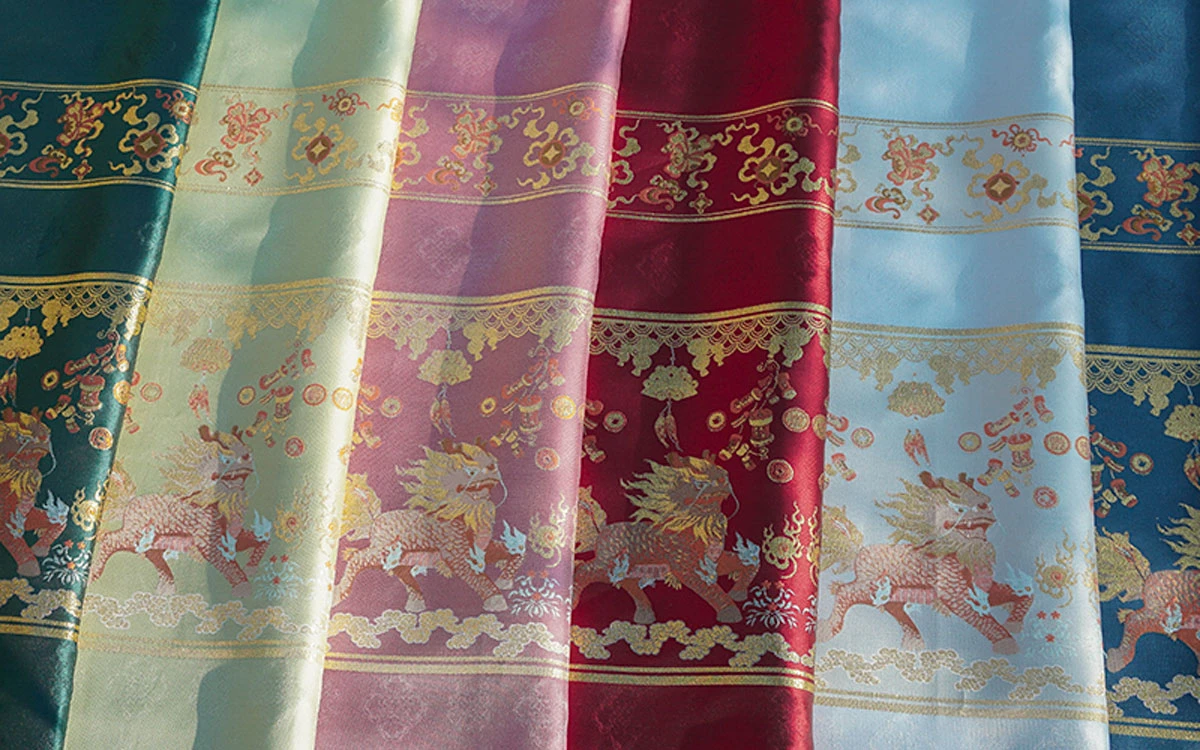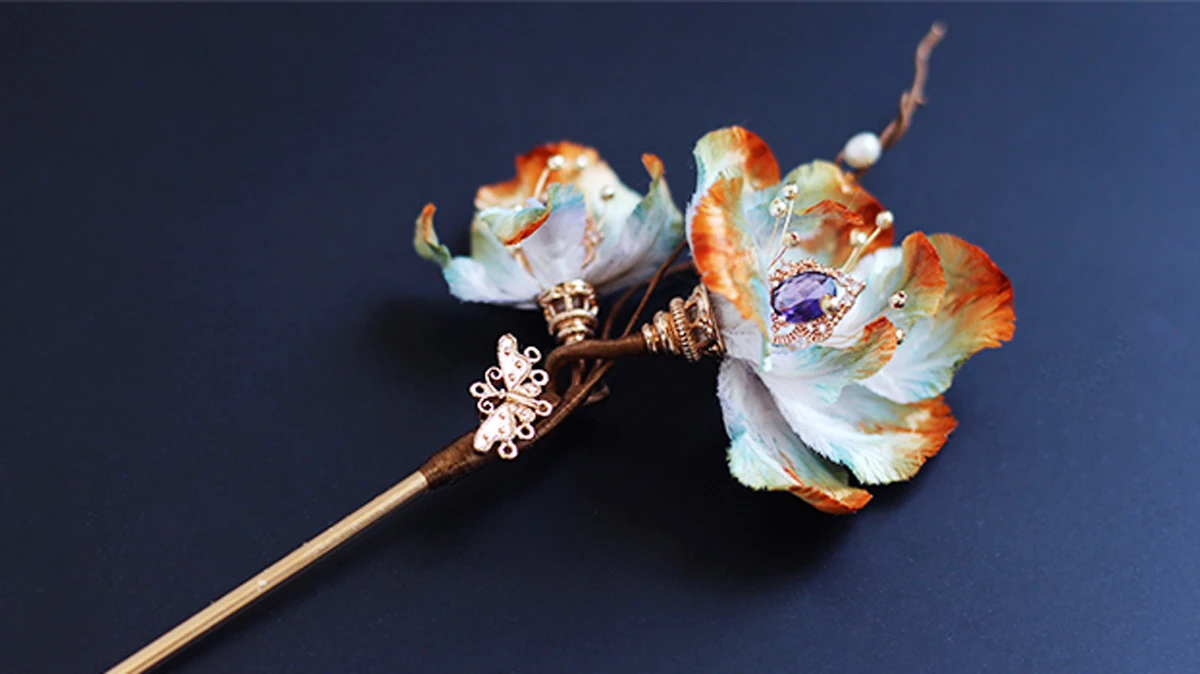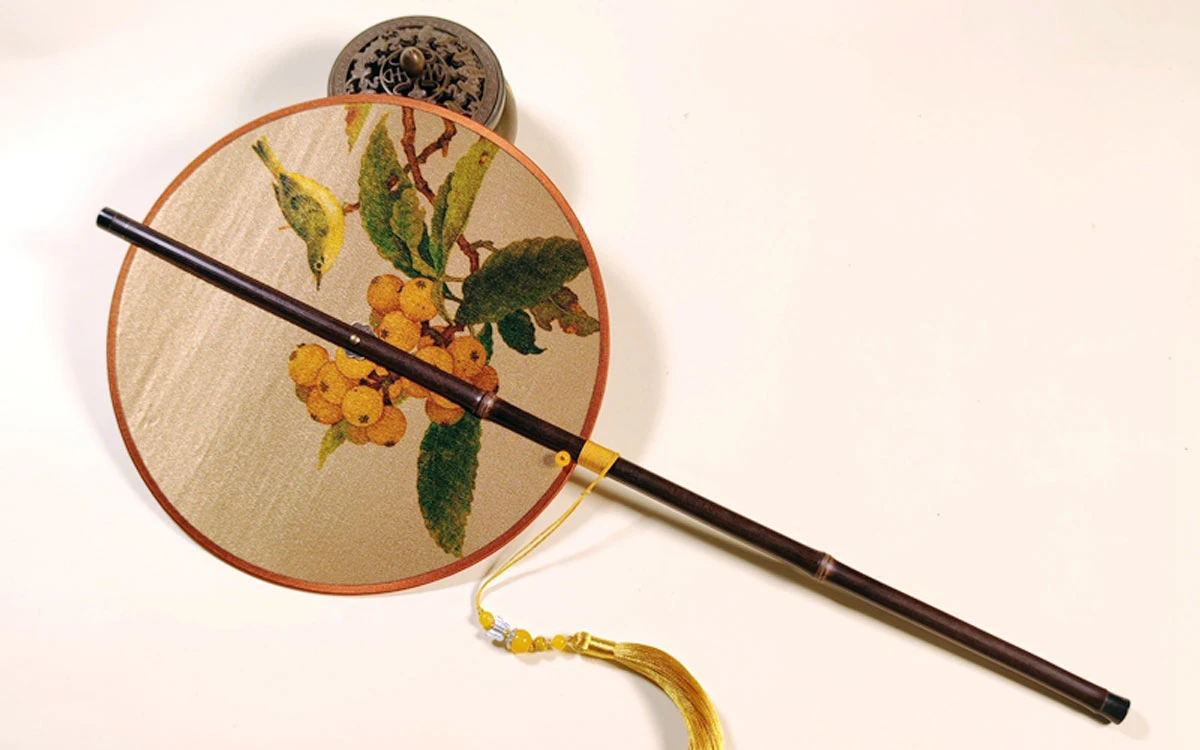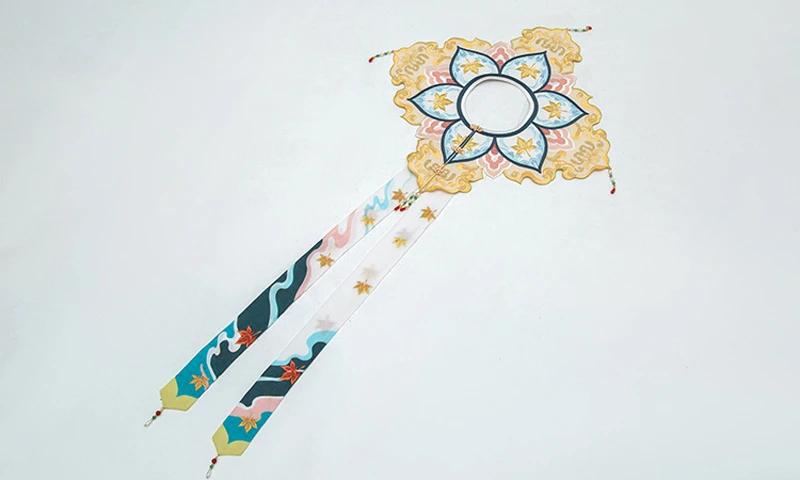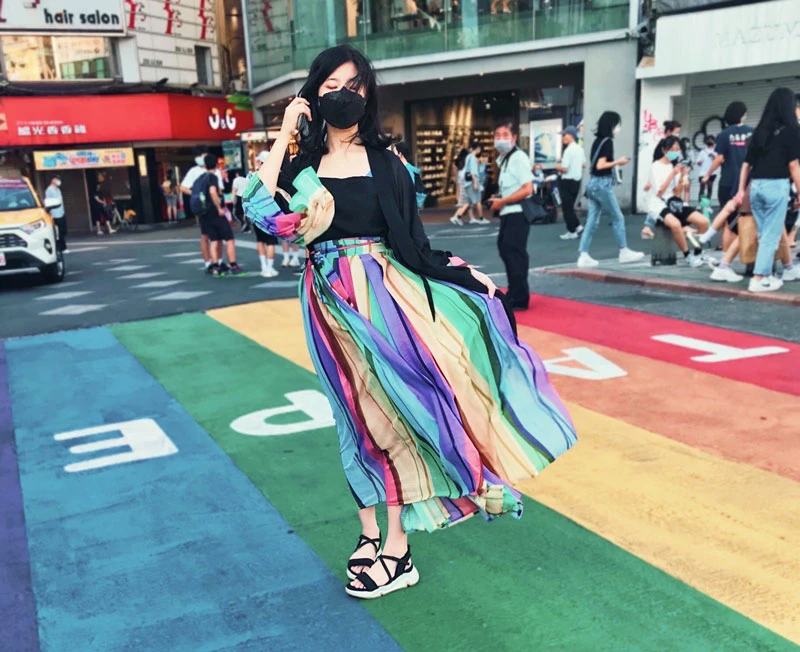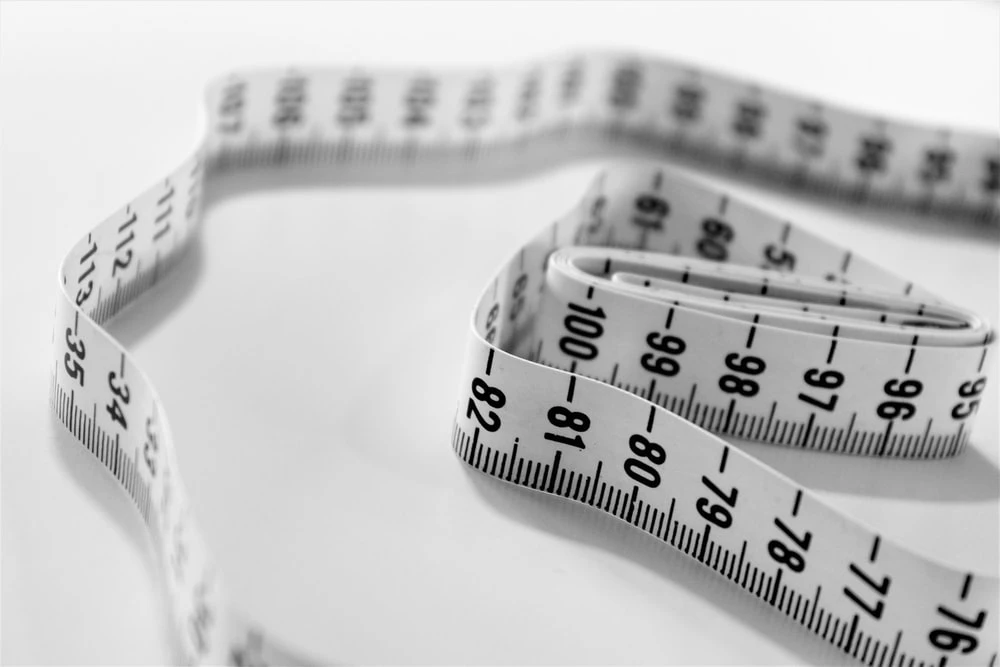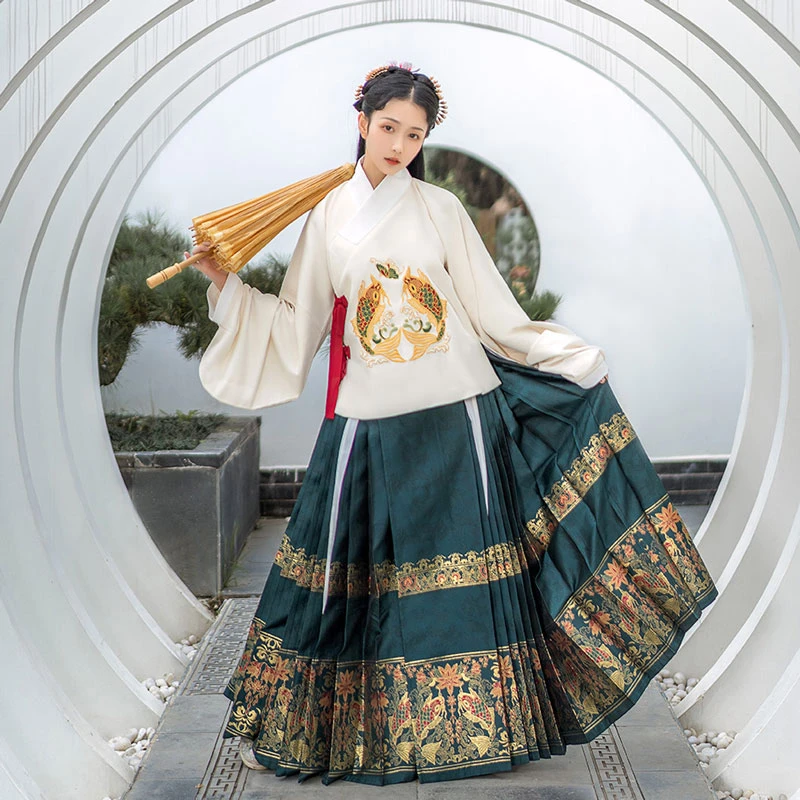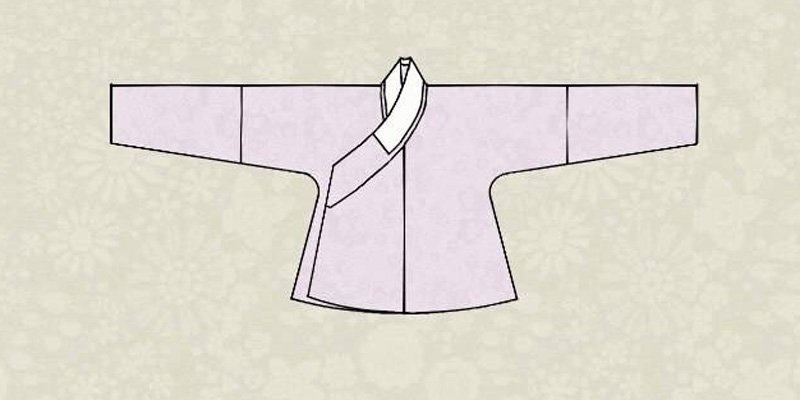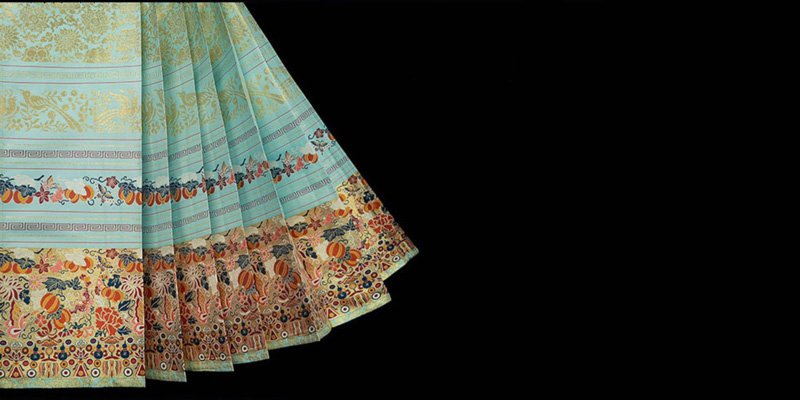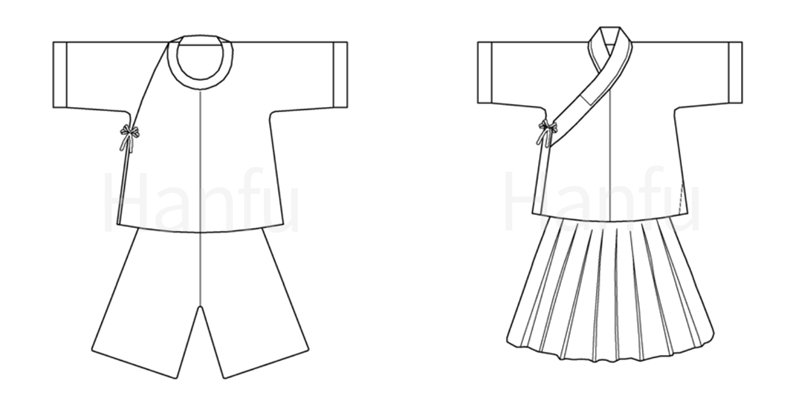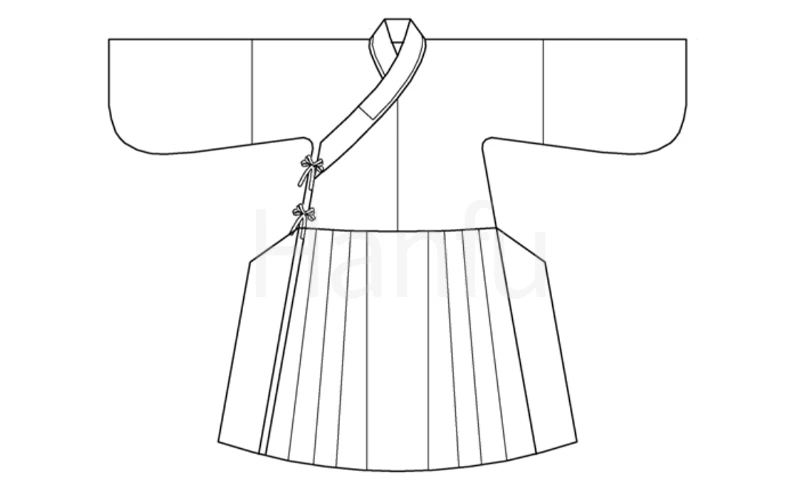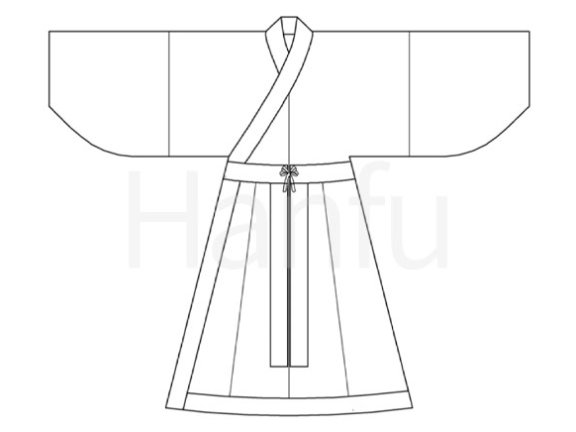-
Silk Road Renaissance: Hanfu Fever Sweeps Global Social Media
The rustle of embroidered silk now echoes from Shanghai's Tianzifang to Xi'an's ancient walls as international travelers embrace hanfu with infectious delight. What began as cultural curiosity has blossomed into a full-blown transnational phenomenon, with foreign influencers and tourists donning Ming dynasty robes and Tang-style ruqun to create viral content that transcends language barriers. This sartorial bridge between eras and continents reveals how traditional Chinese garments are becoming 21st-century cultural connectors. Destination Dressing Historic sites transform into immersive stages where hanfu unlocks deeper travel experiences. In Suzhou's Humble Administrator's Garden, Slavic creator Ana Petrovna floats across zigzag bridges in blush-pink chiffon, her movements harmonizing with centuries-old pavilions. The visual poetry of her ensemble against classical architecture drew thousands of Instagram saves. Urban studios cater to global clients with specialized services. Shanghai's Hanyi Huashang studio stocks plus-size options and offers bilingual styling consultations. "We adjust makeup for deeper eye sockets," explains owner Li Mei, noting 40% of June bookings came from overseas visitors. Iconic landmarks inspire theatrical transformations . At Xi'an's Drum Tower, British photographer Tom Higgins commissioned a dragon-embroidered emperor's robe. "The weight of the gold-threaded cloak made me stand differently—more regal," he laughs. His "Three Imperial Poses" reel trended on TikTok…- 0
- 0
- 38
-
Crafting a Traditional Horse-Face Skirt – Threads of Time and Technique
To create a traditional horse-face skirt is to converse with centuries of artisans. This process, honed during the Ming Dynasty and refined in the Qing era, transforms raw fabric into a cultural statement. Far from a simple garment, each skirt embodies calculated geometry, symbolic motifs, and generational wisdom—a wearable archive of Chinese craftsmanship. Material Selection Traditional skirts begin with fabric choices steeped in regional logic. Ming artisans preferred luo silk, a lightweight yet durable weave that allowed pleats to hold their shape without stiffness—ideal for Jiangnan’s humid climate. Qing tailors often opted for kesi tapestry silk for outer panels, its slit-tapestry technique enabling photorealistic embroidery. Modern recreations face ethical dilemmas: while purists source wild mulberry silk from historic Zhejiang farms, eco-conscious brands like Vermillion Phoenix now use organic hemp dyed with tea leaves to mimic antique hues. Pattern Drafting: Geometry in Service of Grace The four-panel template follows strict proportional rules. A typical Ming skirt for a woman of 165cm height requires: Two outer panels: 50cm wide x 105cm long Two inner panels: 30cm wide x 105cm long Waistband: 8cm wide x 110cm (allowing overlap) Historic pattern books like the Yuanyang Pu (1627) reveal secret adjustments: a 3° outward flare on outer panels to enhance the “horse face”…- 4
- 1
- 194
-
Finding Fabrics: "Thrifted" Hanfu Materials
Why should hanfu makers turn to thrift stores? For the deals, of course!- 3
- 9
- 553
-
Where Tradition Meets Technology in Chinese Fashion
Peony Perfume Persists: The New Frontier of Scented Garments In the heart of China's Shandong province, a quiet revolution is taking place. The ancient city of Heze (菏泽), long renowned for its peonies, is now at the forefront of a technological breakthrough that's set to redefine the intersection of tradition and innovation in the world of fashion. At a recent women's handicraft exhibition, all eyes were drawn to an extraordinary display from Cao County, Heze. The star of the show? A skirt that seemed to bridge centuries, combining the timeless elegance of traditional Chinese hanfu with cutting-edge textile technology. This wasn't just any skirt - it was a garment woven from peony fibers, infused with a fragrance that could last for two years. Yao Chihang, the visionary behind the "Luo Ruyan" hanfu brand, beamed with pride as she explained the intricate process behind this marvel. "We've developed a new technique to extract fibers from peonies," she revealed. "During the weaving process, we embed the peony fragrance into the fabric itself, ensuring the scent remains for at least two years." This innovation isn't just a novelty; it's a testament to the potential of merging ancient craftsmanship with modern technology. The skirt itself…- 1
- 1
- 289
-
How Traditional Attire is Reshaping Modern China
From Niche to Billions: The Explosive Growth of Hanfu Industry In the heart of bustling Shanghai, amidst the gleaming skyscrapers and neon lights, a curious sight unfolds. A group of young professionals, dressed not in Western suits or casual wear, but in flowing robes with wide sleeves and intricate embroidery, make their way through a high-tech office park. This is not a historical reenactment or a costume party - it's a typical workday in 2024 China, where the ancient meets the ultramodern in a phenomenon known as the "Hanfu Renaissance." The resurgence of Hanfu, the traditional clothing of the Han Chinese, is more than just a fashion trend. It represents a seismic shift in cultural identity, economic opportunity, and national pride that is reshaping the landscape of modern China. What began as a niche interest among history enthusiasts has exploded into a multi-billion yuan industry, with ripple effects touching everything from tourism to technology. In 2023, the Hanfu market in China reached a staggering 14.47 billion yuan (approximately $2.24 billion USD), with projections suggesting it could nearly double to 24.18 billion yuan by 2027. This growth is not just in sales figures - the number of Hanfu-related businesses registered in…- 1
- 1
- 350
-
Embracing Tradition and Innovation: Caoxian's Hanfu Industry
Reviving Heritage: Caoxian's Journey to Cultural Prominence In the bustling districts of Caoxian, Shandong Province, a quiet revolution is underway, fueled by the resurgence of traditional Hanfu clothing. What was once a niche interest has blossomed into a booming industry that not only revitalizes cultural pride but also drives economic growth. This transformation is emblematic of Caoxian's innovative approach to integrating heritage with modern entrepreneurship, paving the way for sustainable development in rural China. From Tradition to Trend: The Hanfu Renaissance in Caoxian The story begins with the humble origins of Hanfu, ancient Chinese attire revived to captivate a new generation. Caoxian, historically renowned for its cultural richness, has become a nucleus for Hanfu production, drawing on centuries-old craftsmanship to meet contemporary demands. This resurgence has not only preserved traditional textile techniques but also introduced innovations like lightweight fabrics and modern designs, appealing to a diverse demographic across China and beyond. Cultural Confidence Driving Economic Expansion The success of Caoxian's Hanfu industry is not just about fashion; it's a testament to cultural confidence. As the market for Hanfu expands exponentially, local entrepreneurs are leveraging this cultural resurgence to propel economic growth. The shift from seasonal to year-round production has bolstered…- 0
- 0
- 226
-
Hanfu Accessory: Wrapped Flower History and Chan Hua Basic DIY Steps
Vocab of Wrapped Flower Wrapped flower - 缠花 (chán huā) - a name used to called artificially made flower using the techniques of wrapping colored silk thread around cut-out pieces and combining each parts together to make flowers, animals, insects, etc. Spring Flower - 春仔花 (chūn zǐ huā) or 春花 (chūn huā). Used in this situation would mean various types of flower combined into a small batch each flower symbolize for different meanings in China. In this case, the flower would be a wrapped flower rather than a real flower. History of Wrapped Flower Through ancient China, people held a profound appreciation for nature, which manifested in their beliefs of deities who governed natural forces to their interest in making poetry, music, and artworks that represented the beauty they saw. One remarkable custom in ancient China were the flower hair-pinning practice known as "簪花的习俗 (zān huā de xí sú)," where both men and women adorned their hair or hat with flowers, either fresh or artificially made. Talking about flowers, there are many artificial flower craftsmen that have passed down for centuries, including "ronghua" and "wrapped flower." The art of wrapped flowers originated during the Ming Dynasty and arrived in the…- 8
- 3
- 4.1k
-
Embrace the Grace of Summer Hanfu Fabrics: The Perfect Blend of Tradition and Comfort
From the enchanting landscapes of ancient China to the modern fashion runways, the timeless elegance of Hanfu garments continues to captivate hearts across the globe. As we embrace the warmth of summer, it's time to dive into the fascinating world of fabrics that effortlessly blend tradition with comfort, bringing forth a refreshing sartorial experience. Still bothered by what fabric is cooler for hanfu? This article will introduce you some common fabrics for summer hanfu. 01 Preliminary introduction to modern clothing fabrics Modern clothing materials can generally be categorized into three types: natural fibers, artificial fibers, and synthetic fibers. Artificial and synthetic fibers can also be combined to form chemical fiber. Natural fiber mainly refers to animal or plant-based fibers such as cotton, linen, wool and silk. Cotton has excellent moisture absorption properties while being breathable and warm but is prone to wrinkling; linen fiber doesn't curl easily but wrinkles easily with a rougher texture. Artificial fiber (also known as regenerated fiber) is made from natural polymers. According to the shape and usage of artificial fibers, they are divided into three categories: rayon, viscose staple fiber, and artificial wool. Important varieties include viscose fibre, acetate fibre, cuprammonium rayon fibre etc.…- 2
- 3
- 520
-
Hanfu Accessory: Tuanshan History and Shapes
Vocabulary Moon-shaped fan; 团扇 (tuánshàn). Also called 宫扇(gōng shàn), 纨扇 (wánshàn), 合欢扇 (héhuān shàn), a fan that is made from silks, embroideries, golds, beads, etc. later on into the period. Barrier fan; 障扇 (zhàng shàn) - one of the earliest version of fan from ancestors. Made with pheasant’s feathers and has a long handle. Also known as 长扇 (Chǎng shàn)、掌扇 (zhǎng shàn)、五明扇 (wǔ míng shàn). It is under the category of moon-shaped fan (团扇). Imperial carriage; 辇 (niǎn). Also known as chariot. This is the earlier versions of traveling vehicles primarily used by prestigious people for ceremonial processes, imperial tours, and any other formal occasions. The usage of this is closely related to imperial court instead of public, such as for emperor, queen’s mother, empress, and imperial concubines. These types of carriage are still man-drawn, and are made of simple designs with either a cushion or a chair for the individual seating on it. History of Tuanshan The moon-shaped fan, also known as 团扇 (tuánshàn), is a traditional handicraft tool of the Han people from ancient China. It consists of four main components: the fan's frame, handles (usually short in length), the fan's surface (made of semi-transparent or opaque…- 1
- 0
- 2.1k
-
Explore Ancient Chinese Fabrics: A Guide to Identifying and Appreciating Traditional Textiles
In the context of the Chinese language, "Ling Luo Chou Duan" usually refers to various exquisite silk fabrics. However, there are many types of ancient Chinese fabrics, and "Ling Luo Chou Duan" cannot cover them all. This article will briefly introduce how to identify various Chinese ancient hanfu fabrics such as "yarn, silk, brocade, velvet", and so on. However, it should be noted that the names of each textile organization in different dynasties are not exactly the same. They have also developed over time, so this is just a general explanation to give everyone a simple impression. Structure of Ancient Chinese Fabrics The common structures in Chinese fabrics are needed to determine the relationship between each yarn, which is the pattern of overlapping warp and weft yarns in the fabric. There are five common types of structures, which are also known as San Yuan structures. Ping Wen Structure Ping Wen structure (plain weave) is woven with the warp and weft threads alternating over and under each other. Plain weave fabrics are durable and resistant to wear, but have less elasticity and a lower sheen. If you touch it, you will find that the feel is hard, but relatively thin.…- 6
- 9
- 1.6k
-
The Blossoming Beauty of Tang Dynasty Costume Fabrics: A Study of Floral Motifs
China has a long history of loving and appreciating flowers, but in fact, before the Northern and Southern Dynasties, flowers were rarely used as the main decorative motifs in life, from the Shang and Zhou dynasties to the Han dynasty, the dominant decorative motifs were mainly animal and geometric. It was not until the Wei-Jin-North and South Dynasties periods that, with the introduction of Buddhism, the Lonicera twining pattern was introduced into China, and under the development and effect of cultural intermingling, the Lonicera twining pattern with exotic colors was combined with the local lotus pattern with auspicious symbolic meaning, forming a new form of decorative pattern. These motifs first appeared in a large number in the decoration of religious instruments, and as they spread, they also appeared frequently in the decoration of secular crafts. In the Tang Dynasty, in addition to the floral patterns inherited from the Wei and Jin Dynasties, different floral shapes such as peonies and chrysanthemums, as well as the Baoxiang patterns also appeared in the expression of the decorative patterns. The floral patterns of the Tang Dynasty are very different from the slender and delicate shapes of the Wei and Jin Dynasties, with rich and…- 2
- 3
- 1.6k
-
The Fabrics of Hanfu: Fibers and Weaves
Hey everyone, long time no see! It's been a while and I promise I'm still working on the Song Dynasty sections of Hanfu Unearthed—in the meantime, enjoy this not-so-short cheat sheet to all of the most commonly used fibers and weaves in hanfu, whether historically or in the industry today. Fibers Fibers are the material from which threads are spun to be made into fabric. These include synthetic fibers made in labs or factories by humans, as well as animal fibers that are grown as fur or silk by animals, or plant-based fibers that we harvest from various fibrous plants. Tencel Rising in popularity, especially last summer, tencel is a kind of semi-synthetic fiber made from cellulose, also called lyocell, originally made to imitate silk. Made by dissolving cellulose into pulp and using dry jet-et spinning to reconstitute the fibers, it’s a clean process that creates a kind of synthetic fiber using natural materials: easier to dye than cotton, more breathable than polyester, moisture-wicking, and softer than linen. The one downside of tencel is that it’s easily wrinkled, but its smooth draping quality and breathability make it a first choice for hanfu manufacturers today. Other rayons are also used, but…- 13
- 11
- 3.1k
-
Hanfu Accessory: Ronghua History and Basic DIY Steps
Vocabulary Velvet Flower - 绒花 (rónghuā) - a realistically made flower made artificially from silk threads and copper wire. Palace Flower - 宫花 (gōng huā) - another way to call ronghua with the rise in popularities of ronghua to females in the palace. Untwisted Silks - 无捻蚕丝 (wú niǎn cánsī) - when it comes to silk threads, depending on the type and material of the threads, one single thread can be made up of thinner threads twisted together. Untwisted silk thread means there are no smaller twisted threads. You can directly skip to the brushing steps in ronghua making process. Hunan Embroidery Thread - 湘绣线 (xiāngxiù xiàn) - another type of thread used in ronghua making. Suzhou Embroidery Thread - 苏绣线 (sūxiù xiàn) - another type of thread used in ronghua making. History 绒花, rónghuā, an artificial handcraft head accessories made from materials such as silks and coppers. It existed since the Qin Dynasty. There are many known “brands” of ronghuas, such as Nanjing Ronghua. In the Tang era, Wu Zetian listed Nanjing Ronghua as a royal tribute to the Yangzhou area becoming a luxury only princes and princesses can use. Eventually, Nanjing Ronghua became something that represents Nanjing but also…- 12
- 15
- 11.4k
-
4 Kinds of Common Hanfu Fabric Process
Fabric and craftsmanship are both very important aspects of hanfu making. In this article, several common hanfu fabric processes will be briefly introduced to you. Zhuang Hua Zhuang Hua (妆花) is the most complex variety of weaving technology in Nanjing cloud brocade, and also the representative jacquard silk weaving variety with the most local characteristics of Nanjing, was popular in the Ming and Qing Dynasties. Traditional Zhuang Hua is made of artificial weaving, and the Zhuang Hua on nowadays are all "imitation Zhuang Hua", which are made by machines. The Zhuang Hua fabric is characterized by many colors and is rich in color changes. In terms of the weaving method, the pattern on the fabric is partially painted by using a colored fleece weft bobbin. The color matching is very free and there are no restrictions. The main pattern of the design is usually expressed in two or three levels of color, and some patterns are expressed in simple color (such as pedicels, leaves, and buds). A piece of Zhuang Hua fabric with patterns and colors can be matched in more than a dozen or even 20 or 30 colors. Although there are many colors of Zhuang Hua, but…- 5
- 7
- 1.5k
-
Hanfu Accessory: Yaoshan History and DIY
A brief history of waist fan (yaoshan) and steps to DIY one for anyone interested. Vocab Tuan Shan: moon-shaped fan, 团扇, tuánshàn; Zhe Shan: folding fan, 折扇, zhéshàn; Yao Shan: waist fan, 腰扇, yāo shàn; Ping Feng: screen, 屏风, píngfēng. Introduction When it comes to hanfu, one accessory that it is paired with is a fan. Well-known types of fans are moon-shaped fan and folding fan. But there is another type of fan known as Yao Shan, which translates as "waist fan." The reason why it is called a waist fan is that it can easily be secured at the waist when not used. When the fan is needed, you can just slip it out of the belt and open it up by twisting. It's unlike others where you will either have to constantly hold or unable to close it to take up less space. Waist fans contain characteristics from both moon-shaped fans and folding fans. It took the common round surface of a moon-shaped fan and the ability to close and open when needed from a folding fan. But the round shape is just a common shape everyone goes by. Moon-shaped fans have expanded from simply using a circle…- 2
- 10
- 2.2k
-
Hanfu Accessory Yunjian Making Tutorials
Introduction Yunjian (云肩), is considered to be one of hanfu's accessories. It is often matched with Ming Dynasty clothing, such as long tops (长袄) and folded skirts, known as mǎ miàn qún (马面裙). Those interested in hanfus might be interested in making their own, including yunjian. But, when it comes to making yunjian, there have been little videos that give the full process of making it from scratch. There are, however, kits that can be bought and you just have to attach the pieces. Or, you can just buy the finished product from stores that sell it to match your hanfu set. The reason that there haven’t been many tutorials for yunjian making could be because of the complicated embroidery techniques that are used. Despite yunjian being something small, the intricate designs can require long hours just on sewing itself. If you have a sewing machine, it’ll fasten your pace on the designs, making it much easier for you to do the DIY process. I’ve looked through videos and articles showing steps of yunjian making and I’ll group them here for anyone interested. The steps may be rough, but you’ll get the overall idea of what’s occurring to get the…- 12
- 9
- 2.1k
-
Hanfu Outfit Breakdown: Rainbow 6 Song Hanyuansu
Hey everyone! I’m so sorry about how late this is since I promised this like… three weeks ago, but here’s a little outfit analysis of the rainbow pride outfit that I designed and posted a few pictures of last month! Disclaimer: While I design the shapes, fabrics, and combinations of my hanfu designs, I do not sew any of my hanfu designs! This is due to the fact that I could not sew a straight line to sew my life. Instead I work with various small independent tailors, seamstresses and hanfu workshops. THE BASIC STATS I chose to make this set a Song Dynasty hanyuansu. Song style hanfu has long been known to be the most popular in the summer with its flowy and light layers, and me being in Taiwan for pretty much all of pride month meant that I needed to be able to stay cool in 37+ degrees while hanging around outside for pictures. The main modifications in this set are to the top piece, which is a 吊帶, or camisole, with straps. This is a very simple three-piece set that gives all of its attention to the rainbow skirt. The three pieces include the camisole…- 3
- 2
- 953
-
Common Measurements of Hanfu - Wear Guide
Hey everyone! So there were a couple people in my hanfu server asking about what different kinds of measurements of hanfu were. I answered and did a little compilation of the most basic measurements that you'll see on most sizing charts, if you're choosing a size and buying from a vendor, as well as some that are often used to create patterns and the like. Hope that it's a helpful reference! I've included both traditional and simplified characters in this for better reading and some of my own notes as helpful explanations, let me know if there's any questions you need answered. Body Measurements Let’s start with the basic measurements of your own body. 身高 - Height. Usually in centimeters, if you don’t understand any of the other measurements, this is the one you want to go by. 體重/体重 - weight. often comes up in either kg or lbs, and it’s pretty easy to figure out which one through common sense. I would recommend that you don’t trust this one too much though since everyone is like… a different density. 三圍/三围 - three rounds, the standard starting point for more detailed measurements. These include the three below: 胸圍/胸围 - the…- 6
- 6
- 2.8k
-
The Mamianqun: History, Construction, Features
So the Mamianqun, or 馬面裙, or horse-faced skirt, has been blowing up lately especially because of the Dior controversy—here's an in-depth dive into the history, construction, and features of the famous horse-face skirt. A BRIEF HISTORY OF THE MAMIANQUN The mamianqun or horse-faced skirt is a skirt that first originated somewhere close to the Song dynasty worn by high-class courtesans (who were like celebrities and fashion icons tbh) in the form of colorful pleated silk. It’s named this way because of its resemblance to the mamian fortress, which has stairs on either side (like the pleats) and a door in the front and back (like the skirt doors). The ‘doors’ sides of the fortress were known as the *horse faces* or mamian/馬面 because these were the faces of the fortress where the horses would pass through. It became extremely popular in the following Ming dynasty and stayed popular through the Qing dynasty through Manchurian rule—it’s been around for a long, long time! Mamianqun are more convenient for movement and offer a regal, classy aesthetic as well as a very recognizable and unique silhouette. Even Princess Diana wore one once! BASIC CONSTRUCTION OF A MAMIANQUN The Skirt Doors From the…- 5
- 12
- 12.5k
-
Guide to Choosing Ming Dynasty Aoqun Top
As one of the most popular styles of hanfu, Ming Dynasty Aoqun has a rich variety of styles and styles, and the Jiaoling Aoqun is one of the most common styles. This article is based on the artifacts of Jiaoling Aoqun, so that you can quickly understand the correct Ming Dynasty Aoqun top shape for your next hanfu purchase as well as hanfu making. Image quoted from hanfu making hobbyist @Sue簌簌. 1 Overall 1.1 Youren (右衽, the left lapel covers the right lapel). 1.2 A single layer is a Shan (衫) and a double layer is a Ao (袄). 1.3 Cutting method: with center seam and no shoulder seam. 2 Collar 3 Sleeves 3.1 Aoqun top can have a variety of sleeve shapes. 3.2 Pipa sleeves are wide, not narrow. 3.3 The benchmark through-arm length of Pipa sleeves is nearly two meters. 3.4 The sleeve root should not be too narrow. 3.5 The sleeve is divided into a section or two sections connected. 3.6 Sleeve pleats often accompany the existence of the sleeve edge. 4 Garment body 4.1 The underarms should be curved. 4.2 It is right with or without shoulder pleats. 4.3 The waist should…- 5
- 4
- 1.2k
-
Ma Mian Qun Making - How to Calculate the Width of Pleats
This article is a supplemental part of Hanfu Making(2) - Aoqun Cutting & Sewing Patterns. Together with a series of pictures on making a Ma Mian Qun (马面裙, horse face skirt), it will analyze the structure of Ma Mian Qun and mainly explain how to calculate the pleat width of a Ma Mian Qun. All dimensions are in centimeters (cm). "The data in this article does not take into account the seam allowance, you need to leave 1cm+ space in the seam allowance when you are actually making the dress." 1. About fabric prepare 6 identical pieces of fabric with a width of 60cm and a length that combines your actual needs. Sew 3 pieces together into one piece of fabric with a width of 180cm. Since the most fabric used for making Hanfu is about 150cm wide. So it needs to be pieced together to achieve a longer width. Please note the distinction between the horizontal and vertical directions of the fabric. You can choose a fabric with a nice print for your skirt and it is easier to confirm if it is in the right direction. 2. Structure of the Ma Mian Qun Ma Mian (马面,…- 17
- 5
- 12.3k
-
Hanfu Making(13) - Improved Hanfu Cutting & Sewing Patterns
This section contains improved Hanfu (改良汉服). Please read the introduction of the topic and how to use this guide in advance. Introduction Wearing hanfu is not just for the sake of retro and vintage, but also to show classical beauty and promote the traditional culture of the nation. However, many people have misconceptions about hanfu, believing that the process of wearing hanfu is tedious and that it is not convenient to move around after wearing it. In fact, hanfu is not necessarily a wide robe with big sleeves. The hanfu system itself contains short and slim tops, as well as short-sleeved and narrow-sleeved types of clothing. The hanfu tops can be matched with modern skirts and pants with a little improvement of the form, as long as the shape and color match. The "improvement" referred to here is not to develop to Western-style three-dimensional cutting, but to make certain modifications to the hanfu pattern, such as reducing the sleeve length and cuff width, and making slight modifications to the shape to make it more suitable for matching with modern clothing, combining tradition with fashion, while maintaining the basic shape and flat cutting method of hanfu. It is hoped that this improved…- 7
- 4
- 11.3k
-
Hanfu Making(12) - Yisan Cutting & Sewing Patterns
This section contains Yisan (曳撒, yì sǎn). Size range: 165/88A to 185/104A. Please read the introduction of the topic and how to use this guide in advance. Introduction Yisan is one of the costumes of the Ming Dynasty, evolving from the Yuan Dynasty Bian Xian Ao (辫线袄), but it is still part of the hanfu system because it has a cross collar and has long been incorporated with Han Chinese elements. The shape of Yisan is very special. The front part is cut and sewn separately, the upper garment is short from the front, and the lower garment with pleats is connected at the waist. The back part is cut as a whole, the length is equal to the front garment length plus the lower garment length, and there are no pleats like other long garments. There is hem on both sides of Yisan, also called "Er (耳)" Yisan was mostly worn by military officials or members of the imperial family in the Ming Dynasty, and could be used as riding clothes, and one of the main uniforms of the Jingyiwei officers was Yisan. The fabric color of Yisan was usually red, blue, dark green, etc., and could be embroidered…- 6
- 2
- 6.6k
-
Hanfu Making(11) - Shenyi Cutting & Sewing Patterns
This section contains Shenyi (深衣). Size range: 165/88A to 185/104A. Please read the introduction of the topic and how to use this guide in advance. Introduction Shenyi is a long, straight Changshan with a separate upper Yi (衣) and lower Chang (裳), and joined together to cover the body. There are many different ways to cutting and sewing a Shenyi, but this section is only one of the simpler ones. To make a Shenyi, 12 pieces of equal-sized trapezoidal fabric are prepared and sewn together as a lower Chang, then the upper Yi garment and lower Chang are sewn together. It is also necessary to use another color of fabric as the edge, which eventually the completed Shenyi. The fabric of Shenyi is mostly white cloth, and the edge needs to be made of darker color fabric. In ancient times, if both parents and grandparents are alive, the edge is made of patterned fabric; if the parents are alive, the edge are made of cyan fabric; if orphans, edges are made of plain fabric. Shenyi gives people a graceful and elegant feeling. The basic features are cross collar, wide sleeve roots, slightly closed cuffs, and a Dadai (大带) as a…- 6
- 9
- 9.7k
